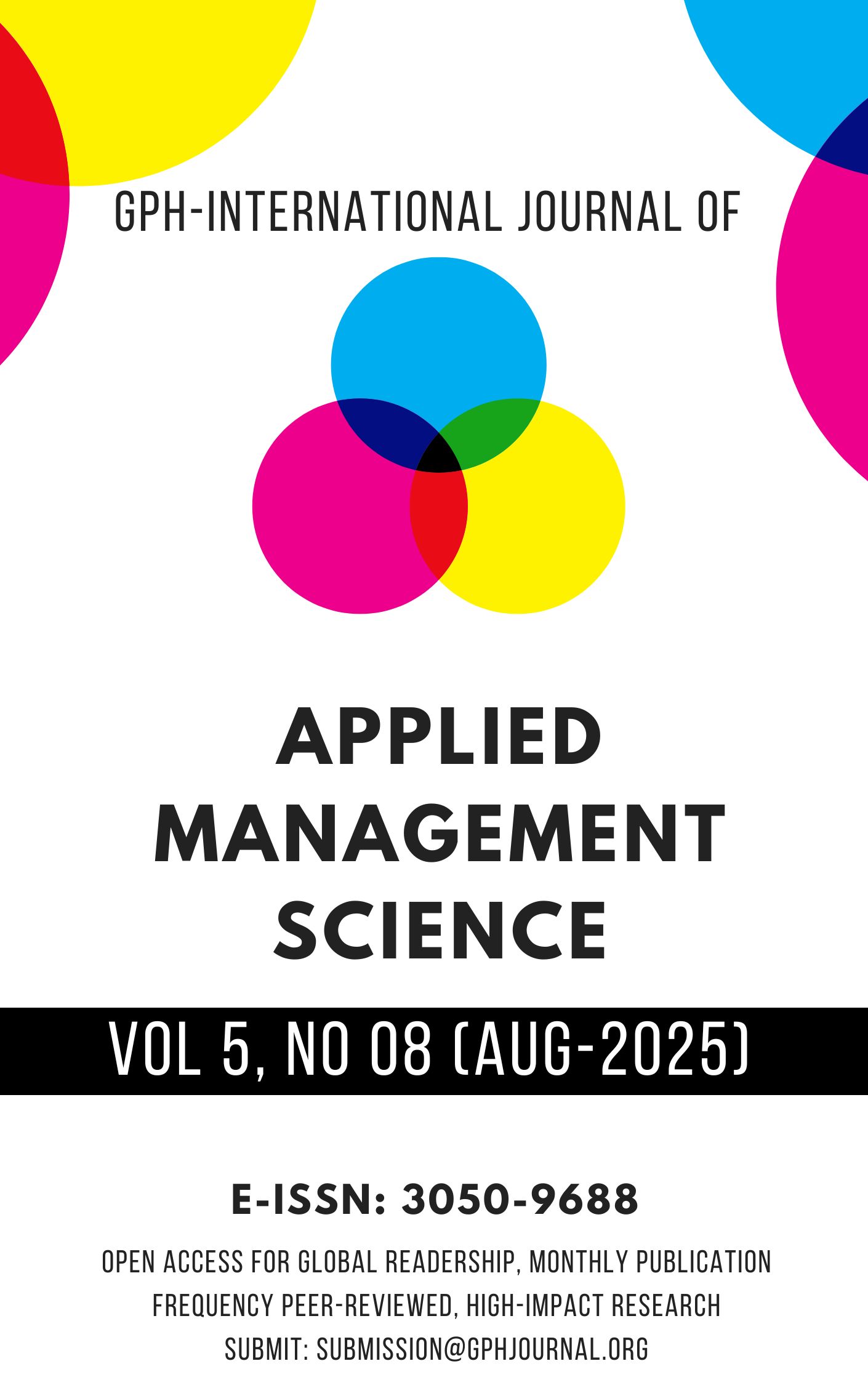Mapping the Intellectual and Thematic Structure of Smart Cities and Sustainable Development: A Scientometric Analysis (2015 – 2018)
Abstract
Background: The convergence of digital innovation and sustainable urban development has become a central theme in contemporary urban discourse. Smart cities are increasingly seen as strategic responses to urbanization challenges, warranting a systematic understanding of the evolving research landscape. This study aims to map the intellectual and thematic development of scholarly work at the intersection of smart cities and sustainable development.
Methods: A scientometric analysis was conducted on publications from 2015 to 2018, with scientometric data retrieved from the Scopus database. Data were processed using Biblioshiny, the graphical interface of the Bibliometrix R-package. The analysis focused on key performance indicators including annual scientific production, citation metrics, leading source journals, most globally cited documents, and thematic structures derived from keyword co-occurrence and multiple correspondence analysis.
Results: A total of 2,998 peer-reviewed publications were analyzed. The findings indicate a steady increase in scientific output, demonstrating heightened scholarly and policy interest in the field. Core publications are concentrated in interdisciplinary journals covering sustainability science, information technology, and urban studies. Frequently cited articles emphasize enabling technologies such as the Internet of Things (IoT), big data, and 5G networks. Thematic mapping revealed four dominant research clusters: sustainability, urban governance, smart infrastructure, and environmental monitoring—signaling a shift from conceptual exploration toward practical implementation and equity-oriented outcomes.
Conclusion: This study provides a comprehensive overview of the knowledge structure and trajectory of research on smart cities and sustainable development. The observed thematic maturation and increasing policy relevance suggest a dynamic and interdisciplinary field with growing impact. These insights can inform future academic inquiries, strategic policymaking, and the design of inclusive, tech-driven urban solutions.
Downloads
References
Agiwal, M., Roy, A., & Saxena, N. (2016). Next generation 5G wireless networks: A comprehensive survey. IEEE Communications Surveys & Tutorials, 18(3), 1617–1655. https://doi.org/10.1109/COMST.2016.2532458
Ahvenniemi, H., Huovila, A., Pinto-Seppä, I., & Airaksinen, M. (2017). What are the differences between sustainable and smart cities? Cities, 60, 234–245. https://doi.org/10.1016/j.cities.2016.09.009
Albino, V., Berardi, U., & Dangelico, R. M. (2015). Smart cities: Definitions, dimensions, performance, and initiatives. Journal of Urban Technology, 22(1), 3–21. https://doi.org/10.1080/10630732.2014.942092
Al-Fuqaha, A., Guizani, M., Mohammadi, M., Aledhari, M., & Ayyash, M. (2015). Internet
of Things: A survey on enabling technologies, protocols, and applications. IEEE Communications Surveys & Tutorials, 17(4), 2347–2376. https://doi.org/10.1109/COMST.2015.2444095
Aria, M., & Cuccurullo, C. (2017). Bibliometrix: An R-tool for comprehensive science mapping analysis. Journal of Informetrics, 11(4), 959–975. https://doi.org/10.1016/j.joi.2017.08.007
Bibri, S. E. (2019). Smart sustainable cities of the future: The untapped potential of big data analytics and context-aware computing for advancing sustainability. Energy Informatics, 2, 7. https://doi.org/10.1186/s42162-019-0022-3
Callon, M., Courtial, J. P., & Laville, F. (1991). Co-word analysis as a tool for describing the network of interactions between basic and technological research: The case of polymer chemistry. Scientometrics, 22(1), 155–205. https://doi.org/10.1007/BF02019280
Cobo, M. J., López-Herrera, A. G., Herrera-Viedma, E., & Herrera, F. (2011). Science mapping software tools: Review, analysis, and cooperative study among tools. Journal of the American Society for Information Science and Technology, 62(7), 1382–1402. https://doi.org/10.1002/asi.21525
Donthu, N., Kumar, S., Mukherjee, D., Pandey, N., & Lim, W. M. (2021). How to conduct a bibliometric analysis: An overview and guidelines. Journal of Business Research, 133, 285–296. https://doi.org/10.1016/j.jbusres.2021.04.070
Hashem, I. A. T., Yaqoob, I., Anuar, N. B., Mokhtar, S., Gani, A., & Khan, S. U. (2016). The rise of “big data” on cloud computing: Review and open research issues. Information Systems, 47, 98–115. https://doi.org/10.1016/j.is.2014.07.006
Islam, S. M. R., Kwak, D., Kabir, M. H., Hossain, M., & Kwak, K. S. (2015). The Internet of Things for health care: A comprehensive survey. IEEE Access, 3, 678–708. https://doi.org/10.1109/ACCESS.2015.2437951
Kumar, T., Dahiya, B., & Ayar, Z. (2020). Smart sustainable cities: Toward digital transformation. In T. Kumar & B. Dahiya (Eds.), Smart economy in smart cities (pp. 1–23). Springer. https://doi.org/10.1007/978-981-13-8393-7_1
Silva, B. N., Khan, M., & Han, K. (2018). Towards sustainable smart cities: A review of trends, architectures, components, and open challenges in smart cities. Sustainable Cities and Society, 38, 697–713. https://doi.org/10.1016/j.scs.2018.01.053
United Nations. (2015). Transforming our world: The 2030 agenda for sustainable development. https://sdgs.un.org/2030agenda
van Eck, N. J., & Waltman, L. (2010). Software survey: VOSviewer, a computer program for bibliometric mapping. Scientometrics, 84(2), 523–538. https://doi.org/10.1007/s11192-009-0146-3
Yigitcanlar, T., Kamruzzaman, M., Foth, M., Sabatini-Marques, J., da Costa, E., & Ioppolo, G. (2019). Can cities become smart without being sustainable? A systematic review of the literature. Sustainable Cities and Society, 45, 348–365. https://doi.org/10.1016/j.scs.2018.11.033
Zupic, I., & Čater, T. (2015). Bibliometric methods in management and organization. Organizational Research Methods, 18(3), 429–472. https://doi.org/10.1177/1094428114562629
Author(s) and co-author(s) jointly and severally represent and warrant that the Article is original with the author(s) and does not infringe any copyright or violate any other right of any third parties, and that the Article has not been published elsewhere. Author(s) agree to the terms that the GPH Journal will have the full right to remove the published article on any misconduct found in the published article.









 Street. Viaductweg 186, City. Bruchem, State. Gelderland, Zip code 5314LK, Netherlands
Street. Viaductweg 186, City. Bruchem, State. Gelderland, Zip code 5314LK, Netherlands

